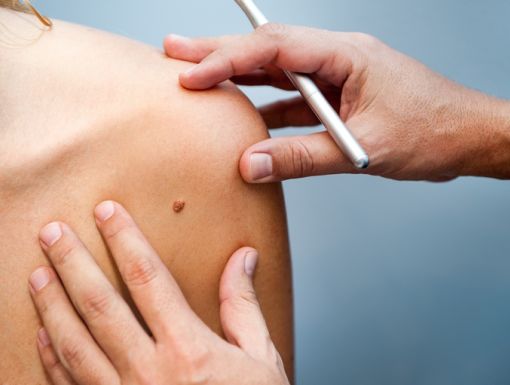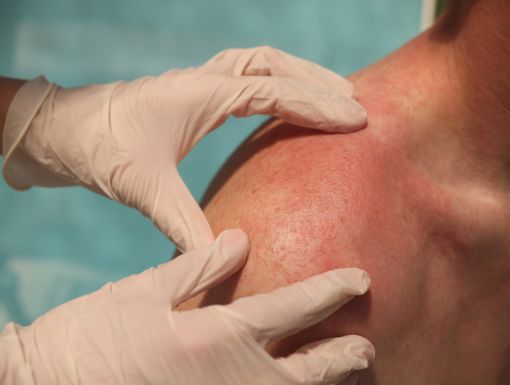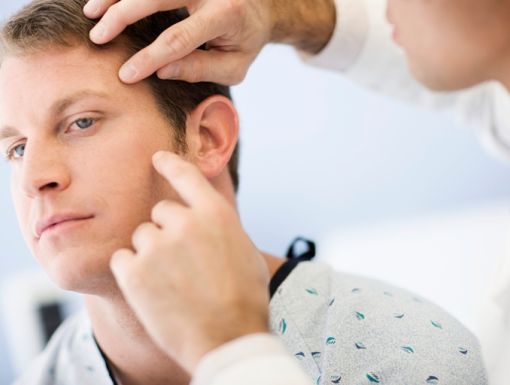
What Are Symptoms of Skin Cancer?
If you were born in a certain era, getting a “savage tan’’ was the goal of many high school and college students. There’s good news: Today’s teen-agers are less interested in baking themselves than their parents, with a new report from the Centers from Disease Control showing that indoor tanning use continues to drop amongst teenagers, from 15.6 percent in 2009 to 5.6 percent in 2017. And adults are abandoning indoor tanning beds, too, with a drop of 5.5 percent in 2010 to 3.5 percent in 2015.
That’s the good news, but the latest CDC “Skin Cancer Prevention Progress Report’’ has some bad news, too. Sunburns remain common among high school students – 57.2 percent reported getting burned – while 35.3 percent of adults reported sunburns. And most worrisome, new cases of melanoma have continued to increase, especially among non-Hispanic, white, older adults.
What is melanoma, and why is it so bad?
Sunburns and indoor tanning beds can cause DNA damage to the skin due to UV radiation. That damage can trigger changes or mutations in the melanocytes, which are skin cells found in the upper layer. Uncontrolled cellular growth is the result.
Melanoma, the third most common type of skin cancer, is especially dangerous because it can invade other organs quickly if it isn’t treated at an early stage.
The most common form of melanoma is “superficial spreading melanoma.’’ It can start as a new mole, where it spreads on the surface of the skin for some time before invading more deeply underneath. It can also evolve from an existing mole. It’s often found on men’s torsos, women’s legs, and backs of men and women. This type is asymmetrical, flat or slightly raised, with uneven borders. Colors include tan, brown, black, pink, blue or white.
The top 2 ways to avoid melanoma
How you treat your skin when you’re young has lifetime effects, and the two best ways to protect yourself from melanoma are guarding yourself from the sun and avoiding indoor tanning beds. Make putting sunscreen on your child before school and before outdoor play time a regular habit.
As parents, we need to take sunscreen as seriously as requiring our children to wear helmets when they ride their bikes or use a seatbelt in the car. Not only are we protecting their skin, we’re helping them think of sunscreen as something you should do every day of your life, like flossing your teeth.
It's never too late to start protecting yourself, however, even if you were one of those “savage tanners’’ of the past. Ever wonder exactly how much sunscreen is enough? If you’re in a swimsuit, about a shot glass full of sunscreen should cover the exposed parts of an adult body. Apply 30 minutes before going outside, and every two hours after exposure to the sun – and immediately after swimming. Look for sunscreen with an SPF of at least 30.
Kids and adults alike should avoid the sun as much as possible from 10 a.m. to 4 p.m., and when you are in the sun, hats, sunscreen, and, if possible, long sleeves and pants in tightly woven fabric offer more protection . You can even buy clothing labeled by UPF (Ultraviolet Protection Factor). Just like sunscreen has an SPF rating, UPF clothing ranges in how much protection it offers. For example, A UPF rating of 25 means that only 1/25th (or 4%) of the UV radiation can penetrate the fabric.
Sun protection isn’t just for fair-skinned people
Fair-skinned people are at higher risk, but Hispanic and African-American people need sun protection, too. Musician Bob Marley was just 36 years old when he died of melanoma, which started as a spot under his toenail that he mistook for a soccer injury.
What if you’re worried about a mole?
Don’t try to diagnose yourself, but do keep track of any changes in your skin and see a doctor promptly if you see something that worries you. Be on the lookout for “ugly ducklings’’ on your skin: moles are spots that are different in color and size from other moles on your skin. A new mark that looks different from its neighbors needs to be checked out.
Look for the ABCDE’s of melanoma: When you’re examining your moles, look for asymmetrical moles, in which one side doesn’t match the other (A); irregular borders (B); irregular or uneven color (C); diameter of more than a pencil eraser (D); and evolution, or change (E).
And regardless of whether you see any changes, you should have your skin checked once a year.
Learn more about skin cancer screenings at Ochsner.



